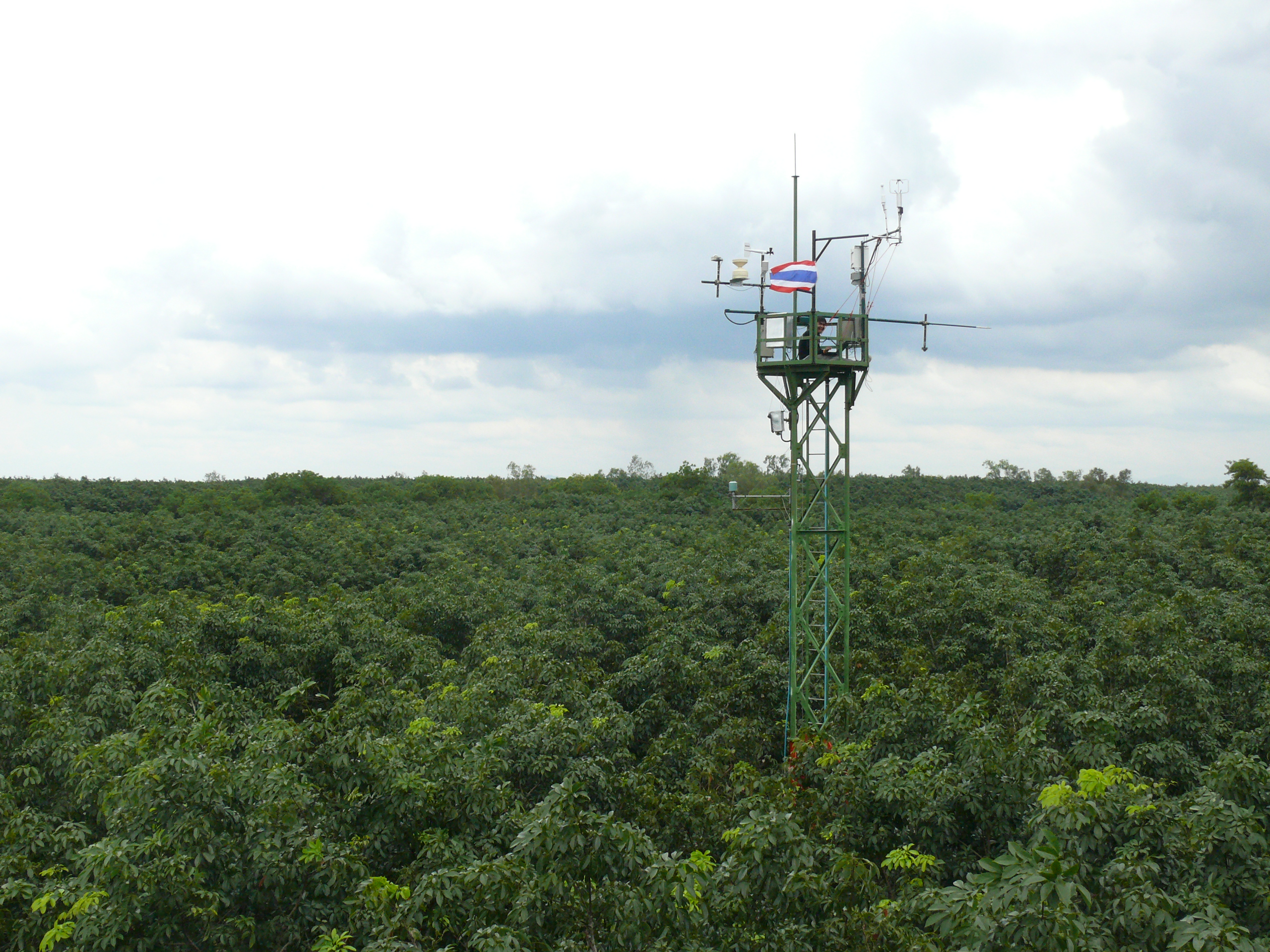CO2, water and energy budget of a rubber tree plantation is measured continuously at the Chachoengsao Rubber Research Center (Eastern Thailand). Complete site presentation is available on the website of the Asian flux measurement network, AsiaFlux.
http://www.asiaflux.net/network/032RFC_1.html


The Chachoengsao site belongs to the Rubberflux observation network managed by Kasetsart University, Cirad and partners in Thailand
New! Fluxomic Hevea: tracking carbon from leaf to latex by field labelling of rubber trees with 13CO2
One of the main challenges for the future of Natural Rubber production is the scarcity of skilled manpower to tap the trees. The only way to cope with such issue is to reduce the tapping frequency. The key is the carbon supply to the latex producing tissues. With low tapping frequencies, the latex exported at each tapping day is higher than in traditional systems. Then the trees must mobilize huge amount of carbon at each tapping. Does the latex carbon come directly from the primary sources, the leaves where C is assimilated through photosynthesis, or from reserve pools as wood starch, or both? Knowing the actual C sources and knowing the pathways towards latex is a key to manage the tapping systems.
We then field-labelled full crowns of 3y-old tapped rubber trees with 13CO2 to trace the carbon from its assimilation in the leaves to the tree sinks and particularly to latex. Such experiment, using a specifically designed chamber, has never been done on rubber trees. Three trees were labelled in June and three other in October, 2016. We sampled leaves, phloem, wood and latex to analyze their 13C content and determine the dynamics of carbon allocation from leaves to reserves and latex. The latex samples will be followed during one year.
It was quite a challenge to label 7m-high trees in tropical conditions! The labelling 30m3 chambers had to be air conditioned and the 13CO2 flow was controlled to match the canopy assimilation rate. See how we did on Thai TV Channel 9 (in Thai mostly...).